7 Places To Retire Near the Mountains on a Budget
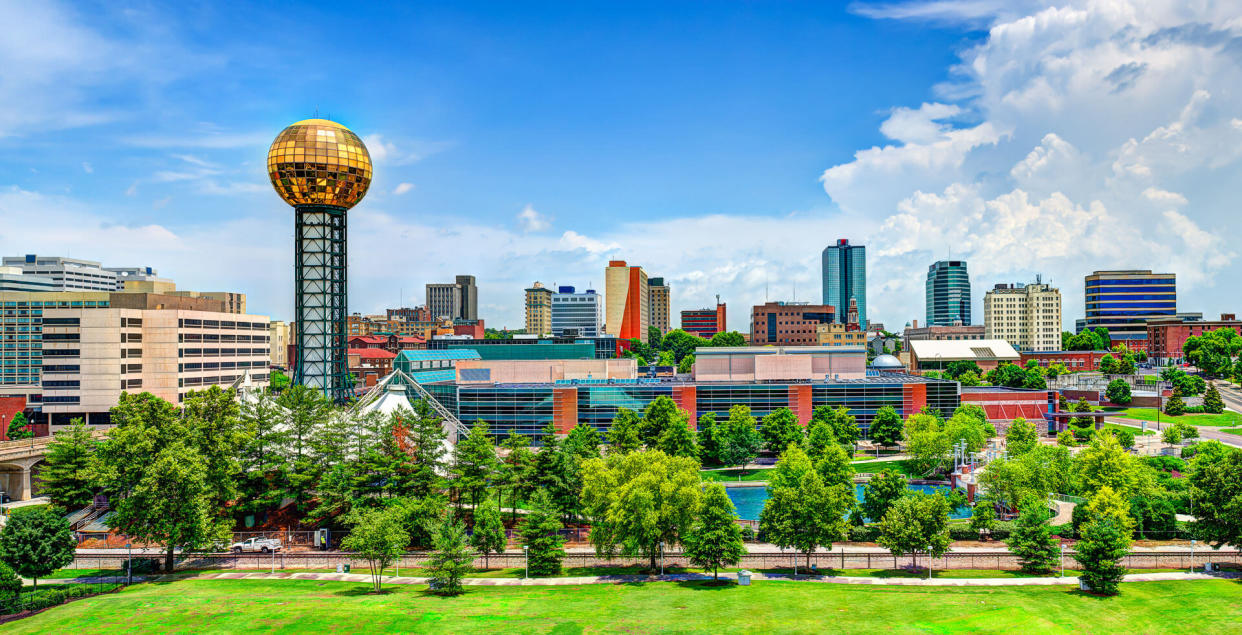
Plenty of outdoor recreational opportunities, higher altitudes, cooler temperatures and majestic beauty are just some of the perks you can gain when you retire near the mountains. However, you'll likely need to choose the location of your new mountain home carefully to stay within the confines of your projected retirement budget.
Read More: 6 Types of Retirement Income That Aren't Taxable
Check Out: 3 Ways To Recession-Proof Your Retirement
That means tourist hotspots like Aspen and Lake Tahoe are out of the question. However, there are plenty of places with mountains close by that are affordable when you're on a fixed income. To determine those places, GOBankingRates used data points from AreaVibes regarding each city's livability and cost of living. Population estimates for people 65 and over were sourced from the U.S. Census Bureau.
To help you make your retirement dreams a reality, here are seven places to retire near the mountains on a budget.
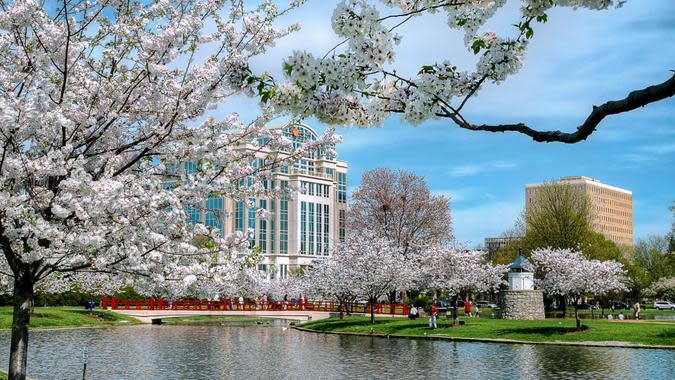
Huntsville, Alabama
Huntsville is located in the foothills of the Appalachian Mountains, which means you can take in all the mountain views you want if you retire there. You'll be in good company, too. Approximately 16% of the population is 65 and over.
The livability score in Huntsville is 79, which is considered excellent, and is due in part to its cost of living, which is 7% less than the national average. The median home value in Huntsville is $168,900, which is 9% lower than the U.S. average, and the median rent price is $750, which is 21% lower.
Take Our Poll: How Long Do You Think It Will Take You To Pay Off Your Credit Card Debt?
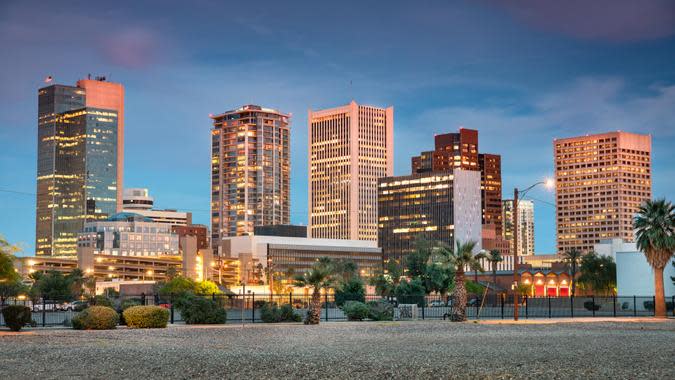
Phoenix, Arizona
Just east of Phoenix lies the most well-known mountain range in the state -- the rugged Superstition Mountains. The livability score in Phoenix is 65, which is lower than average, and the city's higher-than-average crime rate is partly to blame. However, its cost of living might make up for it.
Overall, the cost of living in Phoenix is 3% lower than the national average. Goods and services are 6% lower, and housing is 4% lower. The percentage of the population 65 and over is 11%.
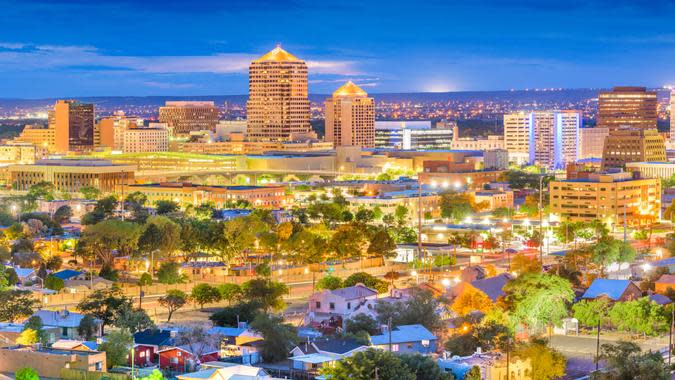
Albuquerque, New Mexico
If you choose Albuquerque as the place to settle in retirement, the rocky peaks of the Sandia Mountains won't be far from home. And while the city's livability score is on the low side at 53, almost 17% of the population is 65 and over.
The low score stems partly from higher than average crime, but the cost of living in this southwestern state is worth consideration. For example, groceries are 9% lower than the national average and housing is 4% lower.
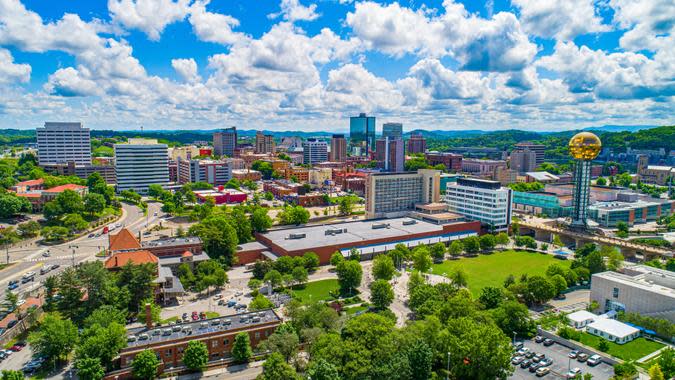
Knoxville, Tennessee
Known as the gateway to the Smoky Mountains, Knoxville has a livability score of 66, which is considered average. The cost of living in Knoxville is 18% less expensive than the U.S. average. The median home value is $120,300 or 35% lower than the U.S. average and the median rent is $766 or 19% lower than the U.S. average.
In fact, the cost of goods and services, groceries, healthcare, transportation and utilities are all below the national average. With such an affordable cost of living, it's no wonder approximately 14% of the population there is 65 and over.

Charlottesville, Virginia
Charlottesville, located in the eastern foothills of the iconic Blue Ridge Mountains, has a livability score of 74, which is considered excellent. Approximately 17% of the population is 65 and over.
Total crime there is 1% lower than the national average but the cost of living is somewhat higher -- but not prohibitively so. Apartment rent is $1,030 per month, or 8.9% above the national average. Groceries are 1% below the national average, and utilities are 1% above the national average.
Social Security: Proposal for $2,400 Extra in Checks Expanded and Reintroduced in Congress
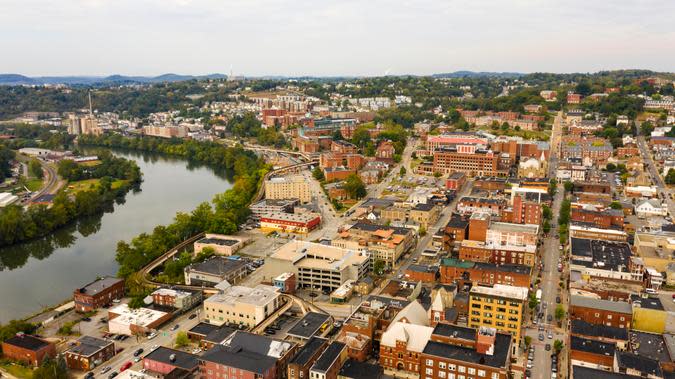
Morgantown, West Virginia
You won't find towering peaks in Morgantown, nestled in the Allegheny Mountains. Average elevations there are only around 1,100 feet. Even so, Morgantown has an exceptional livability score of 79 due to factors like amenities and lower crime rates.
Overall, the cost of living there is 6% lower than the national average. Healthcare expenses are 12% lower than the national average, while utilities and housing are 10% and 9% lower, respectively. People 65 and over make up approximately 17% of the population in this city.
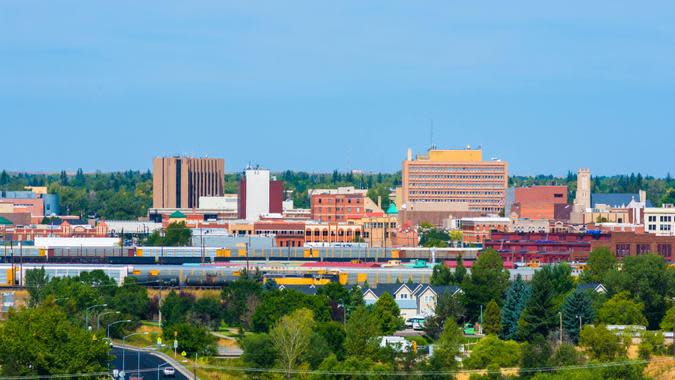
Cheyenne, Wyoming
Although Cheyenne is not located in the foothills of a mountain range, the Medicine Bow-Routt National Forest, with elevations of 7,500 to 8,830 feet, is about 37 miles west of the town. Cheyenne has an excellent livability score of 72, mostly due to its amenities, such as parks, coffee shops, restaurants and retail stores.
The cost of living is also worth considering. The median rent price there is $809, or 15% lower than the national average, while healthcare and utilities are 2% and 16% below the national average, respectively. In Cheyenne, 16.8% of the population is 65 and over.
More From GOBankingRates
This article originally appeared on GOBankingRates.com: 7 Places To Retire Near the Mountains on a Budget


